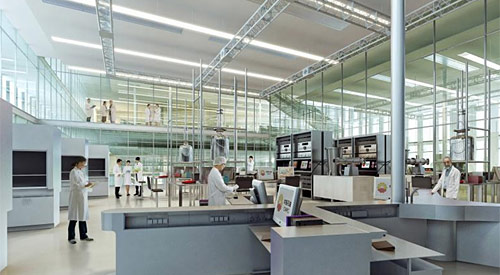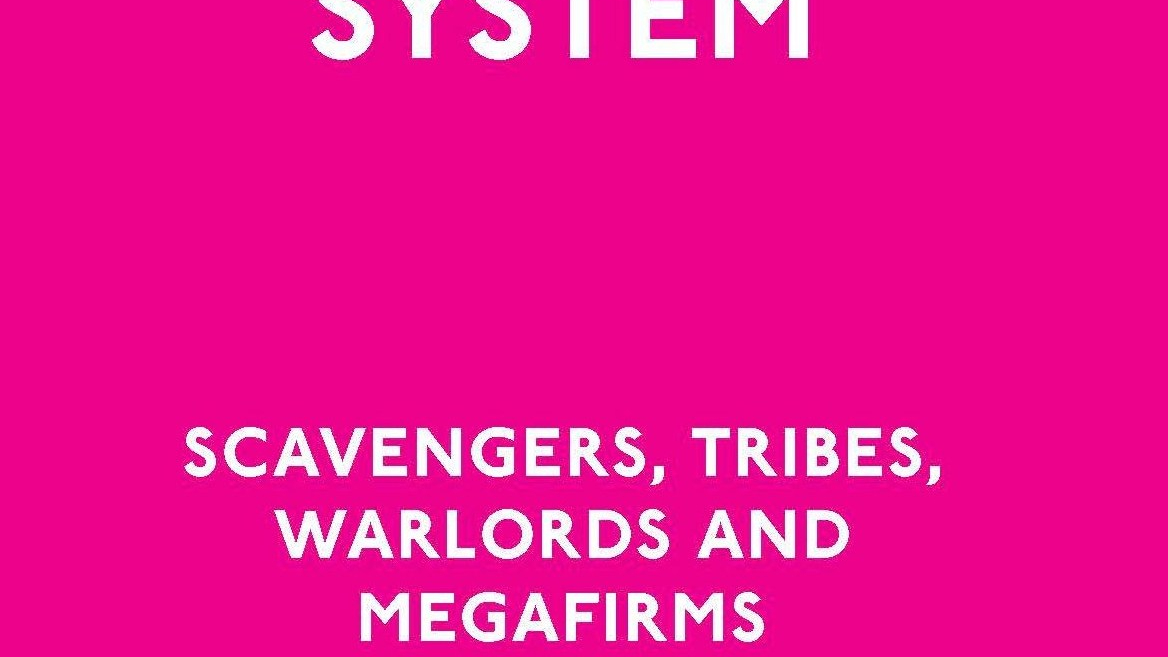
Recently I bumped into a friend who is a director in an small architectural practice he told me that R&D was the practices highest priority. Many architects say this and numerous architectural websites and brochures are full of statements about how research is valued and prioritised. My friends firm is different. They have an advisory board, are involved in numerous architecture schools, one of the directors appears to be constantly gathering new knowledge across the broad domains of urbanism, design and innovation. Interestingly, the practice is one that is actively involved in seeking funding and commercialising at least one of its ideas. The firm is a good example of a firm that is able to do research and then push that down the pathways of innovation and commercialisation. A number of international architects, Australian architects and even academics have been able to go down this path. But I fear this is the exception and that many architectural firms are not effective or face numerous barriers (lack of time being the principal one) in the way that the approach the research and development question.
My point here is not to question what research is, or how it might be strictly defined, or how architectural or design research contributes to knowledge. That is the subject of another blog (if not a PhD thesis). But my friend got me thinking about the question of how should architectural firms, particularly small ones, organise themselves in order to do research?
1. Have a research strategy.
Research involves developing knowledge or expertise in a particular area. For the reason it makes sense that an architectural practice would focus their research efforts in a way that aligns with their business strategy. If the firm seeks to develop a competitive advantage in health, or facade design, or sustainable design or some aspect of urban design then its research efforts should align with this.
Whilst it is important, it may not be effective to pursue research that is simply about implementing new technologies in the office or figuring out what the next bit of funky software the firm should buy (see no. 2 below). Sometimes the line between these activities and strategic research is blurred. One office I worked for, in the earlier days of CAD, did spend a lot of time researching and understanding the expressive possibilities of CAD design and architectural representation. As CAD developed this gave them a large competitive advantage. Clearly the knowledge and research gained, as CAD systems themselves developed, had strategic benefit to the firm. In any case, I would always push for a line of research in the office that is at least aligned with the its current strategies or with its intention to develop new areas of expertise.
2. Pursue radical innovation rather than incidental research.
Whilst research efforts in an office should create knowledge which adds to the firms competitive advantage. This should not always be the case. Of course, I am not sure that simply being technically proficient or doing research that improves a firm’s current efficiencies and capabilities.It is a balancing act between conducting research to improve current capabilities versus working on seemingly new and radical innovations. Getting the balance right is important but sometimes research needs to be wacky. Research is about trial and error and indeed about making mistakes. That is in part what research is about. Buckminster Fuller is a pretty good example of this.
But research in a architecture should not simply be seen as simply materials research. Research is not simply about finding out about new materials for your latest job and then filing the information into a folder for later reference. Unless, of course you think that the knowledge you gain from the material research process can be used elsewhere. But, I think that is what all architects think: They all think the extra research or knowledge they gain on one project can be used on another. But I am a little skeptical about this. Especially, if the firm does not have a research strategy or its projects are highly customised and different each time.
Sometimes you really have to undertake research that is risky or may not have an obvious or immediate benefit.
3. Create networks that help you to gain knowledge.
As my friend has done in his practice Architectural firms who prioritise research build an ecosystem of mentors, advisers and experts that they can interact with to debate and test new ideas. Almost all startup companies will have advisory boards that advise them through the pitfalls and hazards of commercialising an idea and then growing. So why not architects.Networking of course isn’t neccessarily always about trying to find new jobs. It can also be about gaining knowledge of what is going on across the domains of knowledge where you practice. At least one person in any practice needs scan the horizon for new ideas or the latest research developments.
A good example of creating a research network is Google. The Google platform is an ecosystem that includes consumers, software innovators, content providers and advertisers. It is a permeable system where outsiders can also become collaborators. Hence, it is not simply a matter of trucking in people or experts to help you solve a problem. It is about creating an network or ecosystem of collaborators who can help a firm to create new knowledge and to also understand what is happening within architectural and urban discourse.
4. Use your staff to create research knowledge.
Another dilemma for architects is how to organise a firm to do research. In the old days all wisdom in the office came from the Master. The so-called Master was not unlike Gary Cooper in the Fountainhead movie. He (sadly, always a he) was usually the architectural designer who by force of ego, class background, cachet of education, or through experience and perseverance. When I worked for a “Master” in the 1980s as a young architecture student I could do nothing right and you can imagine what this did for my confidence as a designer. He was a good architect and in later years proved to be a designer of international note. But, he was also never wrong and always insistently right. Contending with the Master’s wisdom was really not a great career move. It was a little bit like being in a cult. Master’s love acolytes and they of course like acolytes who agree with them. The worst thing a firm can do is to create team’s in its own image rather than diverse teams which I would argue are they key to creativity.
Hence, it is best to strive to create distributed research knowledge within and across the firm. More research is done in a practice where everyone contributes to it. Although, we may not want to emulate Google, it is still a good example to think about in this respect. Of course architectural firms aren’t as large as Google; nor are they filled with Ivy League software engineers who get time off each work to do research. But allowing and organising your staff to do research has a number of intangible benefits. Firstly, it gives employees a reason for being and staying in the firm in between mindless CAD “monkey” work. It obviously helps a firm build a portfolio of research interests and streams that may or may not develop, and thirdly by using your staff or other team members you can quickly increase the firms knowledge base. Directors, managers and team leaders in firms need to cut employees slack to do the research and create the new ideas. Ownership of new conceptual ideas or design processes more often than not is, and should be, shared. It never really resides in the mind of one person no matter how much symbolic capital they may have as a master. As they say at Pixar: “A company’s communication structure should not mirror its organisational structure. Everybody should be able to talk to anybody.”
This might be why my favourite model of Knowledge Management or is based on the Japanese management theoretician Nonaka whose work points the importance of “knowledge as a vital source of competitive advantage, there is little understanding of how organisations actually create and manage knowledge dynamically.” Nonaka and his colleagues understand that knowledge creation in an architectural firm, or any firm for that matter, is a collaborative and iterative process.
5. Collaborate with academics.
Bring academics into your firm’s research ecosystem.The problem is academics are often time poor and hemmed in by teaching commitments and an overly regulated bureaucracy. On the other hand not all academics understand the dynamics of practice or business protocols. Most academics in architecture schools love to do research. They also like to talk about it. Because of this it is a good idea to contact and foster the participation of academic researchers (like me!) into a practice’s work. Invite them in as critics. Invite them to the firm’s christmas party. Allow them to participate in planning workshops or esquisses. This will help the academics understand the pressures and time frames of the practice. It will also get them thinking about what you do as a firm and what you can do better. Before you know it you will become part of some usefull collaborative research projects.
6. Teach a studio.
One good way to conduct research and create new knowledge is to teach a studio at an architecture school. I don’t think this is simply a matter of choosing a project with a site and a brief and then getting the students to do it. Studios should not be seen as teaching the students to simply solve specific and simplistic design problems. This is too much of a crank the handle approach to design studio teaching. I believe all studios, particular at a post graduate level should involve the so called “wicked problems”. Research knowledge generated from the studio should be more speculative and less technical. It should aim to solve a difficult problem or be focused on a project that exists in a problematic context.
I would suggest that integrated studios are better. By this I mean studios that integrate different domains of knowledge or disciplines such as landscape architecture, planning or urban design. Or they may integrate different theoretical or cultural domains of knowledge for example the studio may be focused on a particular stakeholder group or sub-culture.
For research in a studio context to be effective it must also have a political dimension. Why? Because, new design knowledge generated from a studio should ideally question an existing situation or status quo. But not everyone would agree with this. Running a studio with an overly technical focus, for example a studio focused on the students exploring the limits and expressive capabilities of a particular software package, may not necessarily be contributing new design knowledge to the architectural domain. In setting up a political dimension or element to a studio the knowledge created can then help the studio leaders to position and locate themselves in relation to various political or policy debates as they emerge in urban discourse. This enables a firm that teaches to gain an advantage over its competitors by actively being a part of an ongoing public and policy debate. A firm may then be able to anticipate and participate in the projects that these policy debates engender and spin off.
